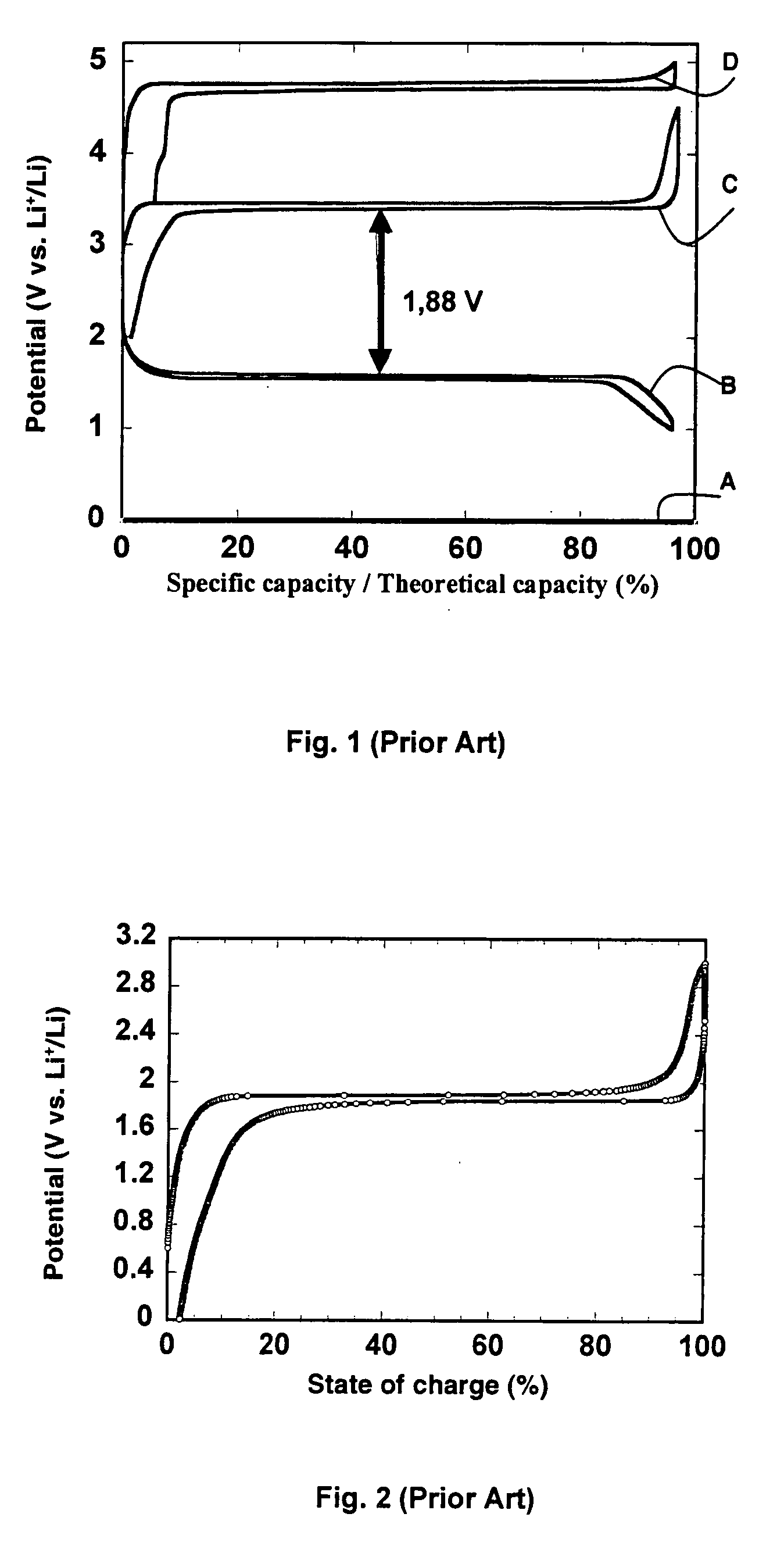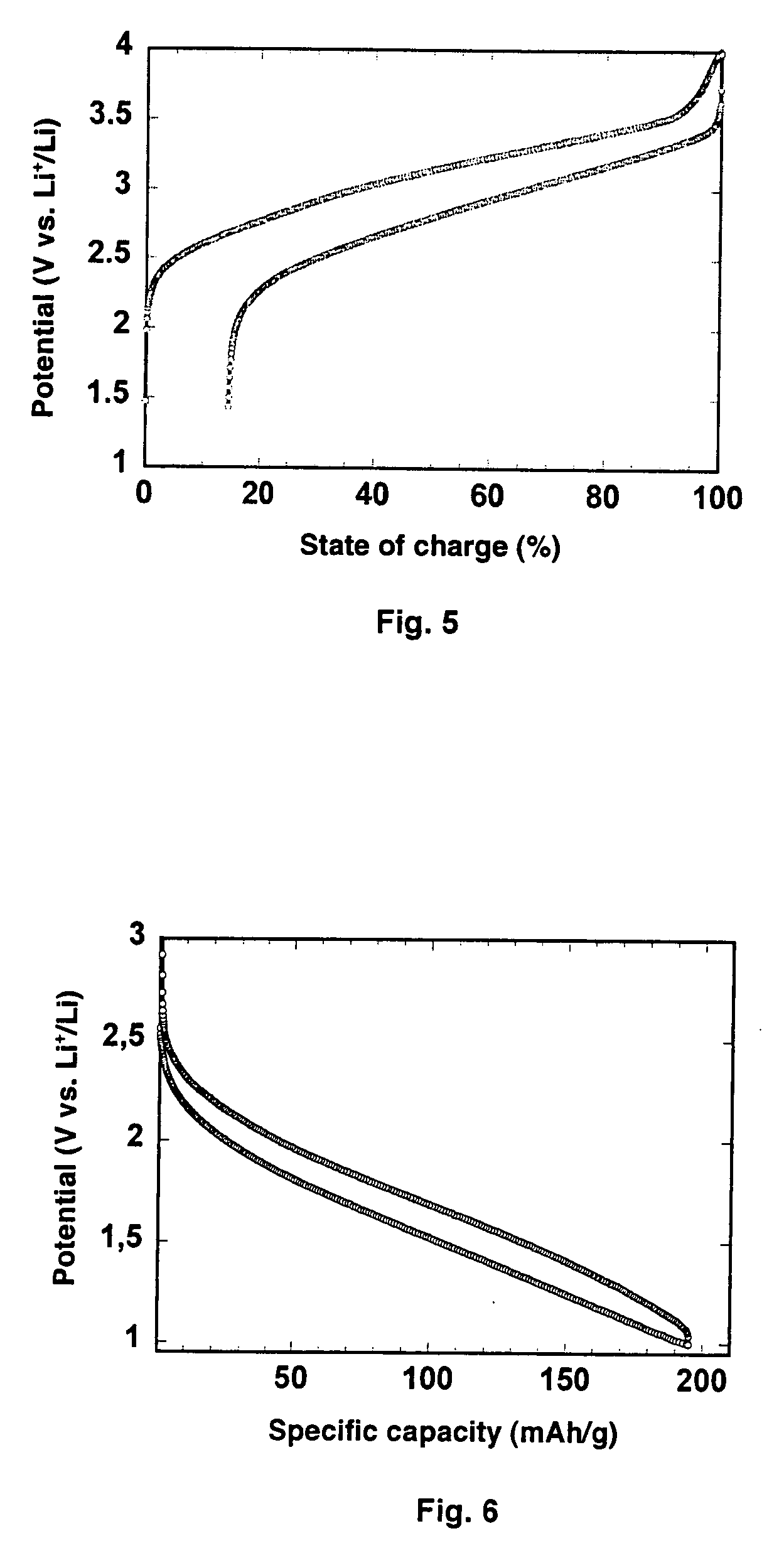Lithium-ion storage battery comprising TiO2-B as negative electrode active material
a technology of active materials and lithium-ion storage batteries, applied in non-aqueous electrolyte accumulator electrodes, electric vehicles, electrical apparatuses, etc., can solve the problems of high cost of active materials and in particular lamellar oxides, and not suitable for applications presenting much greater energy requirements, and achieves convenient inspection.
- Summary
- Abstract
- Description
- Claims
- Application Information
AI Technical Summary
Benefits of technology
Problems solved by technology
Method used
Image
Examples
Embodiment Construction
[0023]The state of charge of a Li-Ion storage battery comprising:
[0024]a positive electrode active material presenting a constant lithium insertion / extraction potential over most of the capacity operating range and selected among LiNi0.5Mn1.5O4 and derivatives thereof,
[0025]and titanium oxide TiO2 of bronze type structure, also called TiO2-B, as negative electrode active material,
can easily be checked by a simple reading of the operating voltage.
[0026]Indeed, unlike the lithium storage battery comprising Li4Ti5O12 as negative electrode material and a positive electrode active material presenting a constant lithium insertion / extraction potential over most of the capacity operating range (for example LiFePO4 or LiNi0.5Mn1.5O4 and derivatives thereof), a Li-Ion storage battery with TiO2-B as negative electrode active material presents an operating potential continually varying according to the state of charge (or discharge). As the operating potential of the positive electrode is const...
PUM
 Login to View More
Login to View More Abstract
Description
Claims
Application Information
 Login to View More
Login to View More - R&D
- Intellectual Property
- Life Sciences
- Materials
- Tech Scout
- Unparalleled Data Quality
- Higher Quality Content
- 60% Fewer Hallucinations
Browse by: Latest US Patents, China's latest patents, Technical Efficacy Thesaurus, Application Domain, Technology Topic, Popular Technical Reports.
© 2025 PatSnap. All rights reserved.Legal|Privacy policy|Modern Slavery Act Transparency Statement|Sitemap|About US| Contact US: help@patsnap.com



